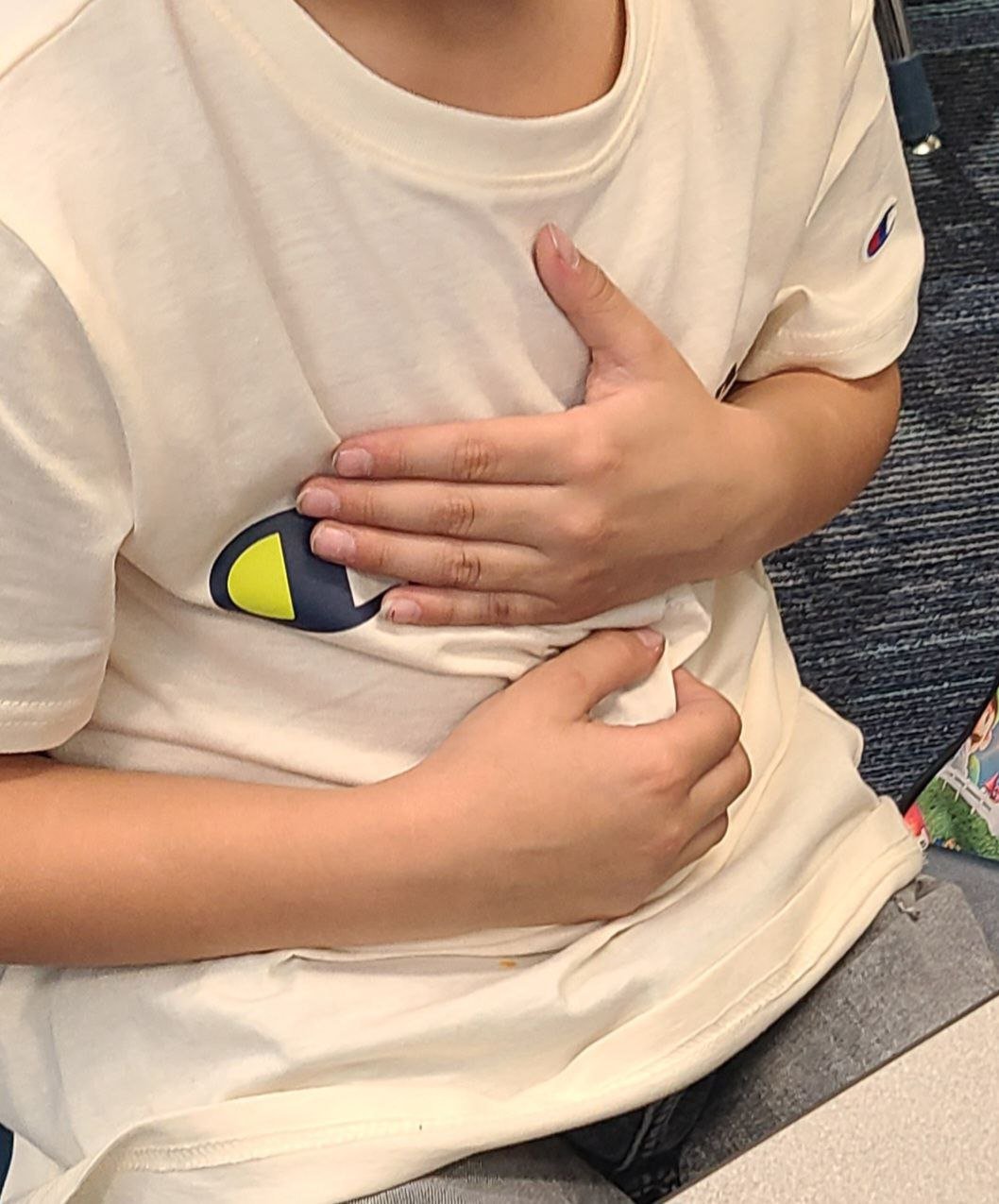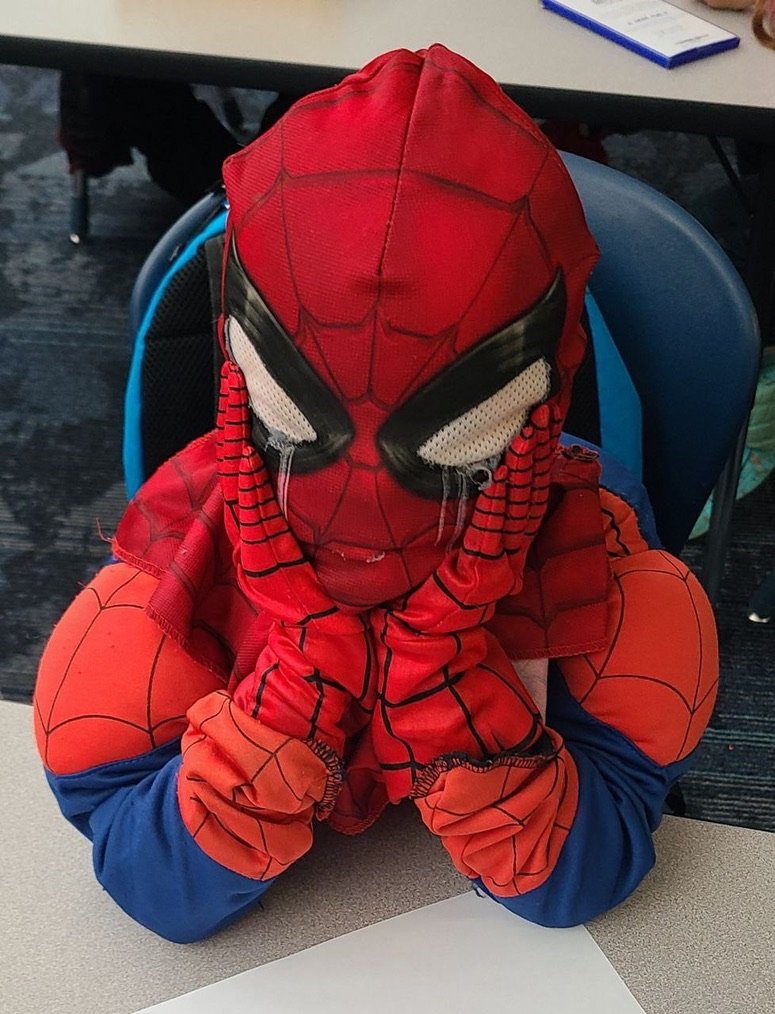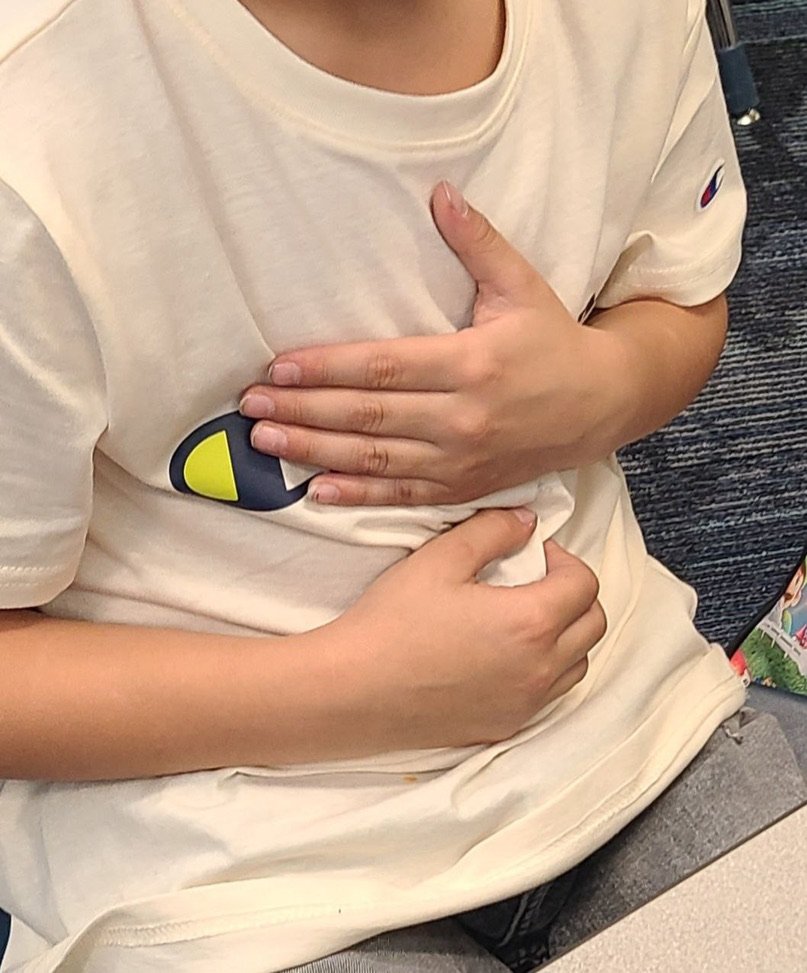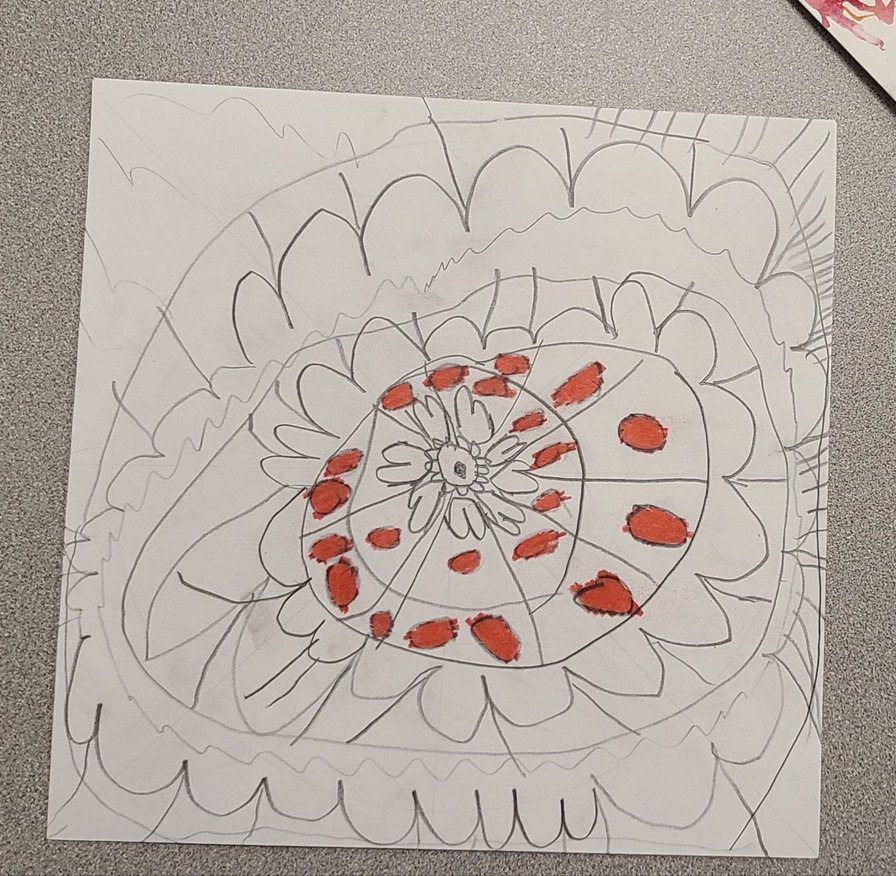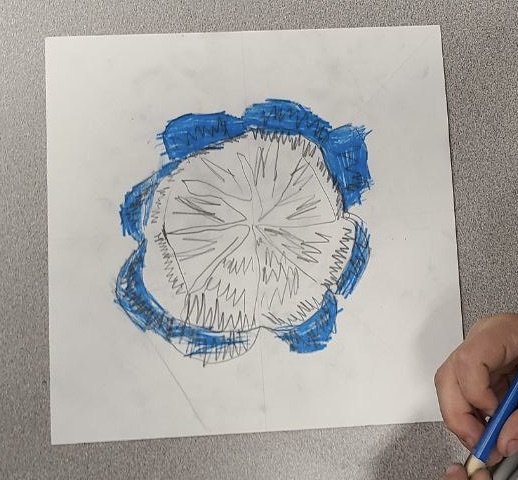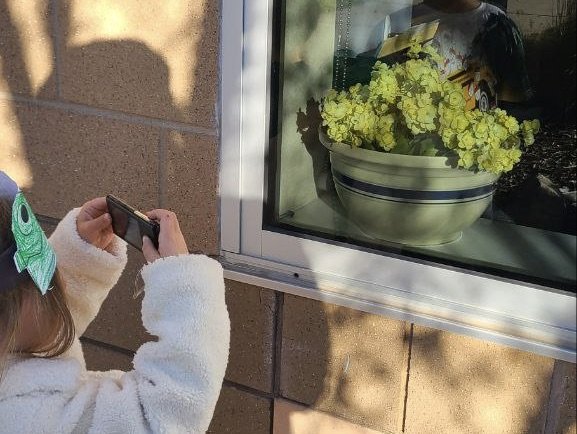Meditative Mandala Making Classes 5 & 6
In my language Hindi, Vyakt means expression and Vyakti means person and many scholars in Indian Spirituality say that man's ultimate purpose is to express himself. As an art teacher, it is my responsibility to teach my students how to freely express themselves and the Halloween costumes definitely made me think about how to facilitate freedom of expression related to art in my classroom. We all saw the cameras that I had got from the art education department for pairs share and student documentation and several students expressed their interest in taking pictures and one of them said I cannot wait to take pictures today..
After this, I did an assessment of how many students knew what mandalas were. I asked the whole class if they knew what mandalas were. Except for two students, one of whom said:
“Mandalas are designs.” and
“Mandalas are circle designs.”
The other students did not know what mandalas were. This was good in a way because I could create by a fresh foundation for the creation of mandalas. We started by learning how to pronounce looking at the history of Mandela's creation and I asked again if students knew where mandalas were made after a short discussion one of the students came forward and pointed out that their origin was in India.
Introducing the concept of symmetry and radial symmetry was fun. I took a rectangle and folded it into two squares and asked what that meant. One of the students immediately replied, “it was equal.” Then I explained that something with symmetry has two equal halves. Then we discussed radial symmetry and the example I gave was of a pie. I talked about how it is important to divide a Pie into equal parts before serving it as some people may think that they got less and some people may think they got more. Immediately one of the students raised their hands and as I let them share she said:
“Even if I got a smaller piece I should be OK because sometimes in life that's what happens.”
I had to just stop for a moment and think about the very wise and mature answer that this 2nd grade student shared with me and reflect on how life cannot be fair and that we should be OK with that. I agreed with that student but also in the context of helping everyone understand radial symmetry, I shared that in radial symmetry all parts of the Pi are to be equal. After looking at some examples in nature in photographs like snowflakes, flowers, fruits, and spider webs, I shared with them that it was time to go out and take pictures of objects with radial symmetry. As we were walking out one of the students stopped way before heading to the door that led outside and said “
As this was one of the first classes in this series of mandala creation classes, I gave them a template with the circle divided into 8 equal parts and gave a demonstration of how we can create symmetry as we make our rough mandala drafts. It was interesting to see how every student had their own unique way of creating the rough drafts. It was interesting to see hearts being one of the common themes that especially girls wanted to incorporate in their patterns related to symmetry.
Based on the advice that I received from my mentor we did a formative assessment where I showed three different mandala designs and asked which one they thought was not radially symmetrical for this I asked them to pick numbers one two or three and it was interesting to see how everybody understood the concept and as they raised their fingers to pick which one they thought was not a mandala. This way of assessment is helping me track progress.
The same student from the beginning of the class started to become disruptive again and we had some conversations about silence helping with radial symmetry. I emphasized having everything be the same but also felt guilty about not allowing total freedom. I am still trying to figure out where that line is. when it comes to teaching art concepts.
Another student took a unique approach where, every section of the pie was made into a king and a queen and showed it to me and asked, “ Mr Joseph, what do you think about my design? Is it the same?” I said there is symmetry and commended her for her originality in design and shared that it was a great idea for her to be incorporating a king and a queen alternating in her mandala design.
Everyone in the class was dressed in various Halloween costumes. As soon as the students started trickling in one by one they all started asking me if I liked their costume. The students asked things like,
Mr. Joseph, what do you think about my Spiderman costume?
I said it looks amazing on you and suits you well and he immediately posed for me to take a picture of him without even me asking. This made me reflect on the ultimate desire of every student to be seen, known, and appreciated for their self-expression especially when I have embarked to become an art teacher.
Another student asked, “Mr. Joseph, is it OK for me to keep my mask on during the whole class?” I said it was OK but I also asked why she wanted to keep the mask on the whole time. She replied that she wanted to keep the mask on the whole time because she was a mermaid who loved cats. During the free drawing time, she created a witch and shared that there are good and bad things in this world but that her mom was a good witch. It is interesting to see children’s imaginations run wild on days like this.
She could not even pronounce radial symmetry but it was so encouraging to see that I had walked right past this big rug and there were amazing mundella designs all over this carpet and I clearly ignored it. All the students studied taking pictures of the rug and several other things that were inside the media room that my attention did not even go to. As we walked outside one of the students started running towards a car and I got nervous but he said the same thing,
“Mr. Joseph look there is radial symmetry on this tire.”
It was fascinating to see how students immediately got busy taking pictures of things that were radially symmetrical and how much they were enjoying the documentation process. This encourages me to create ideation sheets for the future where students can do these kind of exercises so that they can understand art concepts from their own perspective.
Seeing the students enjoy creating their mandala drafts the para who assisted me came up to me and asked if she could also join everyone in creating her own mandalas and I highly encouraged her to do that. It was nice to see her participate along with the other students which was beneficial because one of the students who was having a hard time with radial symmetry just sat right next to her and enjoyed the process of creating along with her.
We concluded the class with one of the students reminding us all by saying, “Breathe deep if someone tries to scare you during Halloween.” This was very encouraging to see how students were remembering some elements from the class and applying it outside of class. I handed out a sheet for them to continue practicing their mandalas and everyone departed to celebrate Halloween with family and friends.
Day 6
In this class, we needed to make sure that we had at least made our final outlines for our mandalas. So I was reminded of my professor’s words that sometimes you just have to do a mindful breathing practice and let that guide the rest of the creative process and so we started with breathing activities which was much needed because some of the students were very agitated and tired from the long day and needed some calming down. I have not had any major behavior issues in my class but seemed like this one student wanted to be disruptive. Me gently putting my hand on his back and telling him to breathe with love helped him calm down.
Instead of doing a free drawing where they documented their emotions, I gave them templates for the mandalas and we got to work right away. It was beneficial because it helped me assess where they were with in regard to their knowledge of radial symmetry and what I needed to focus on in the lesson. As soon as we started, I observed one of the students very neatly making hearts in concentric circles on her draft.
Everyone continued making their unique mandala designs and seemed to enjoy the new playlist I created for them to stay relaxed and focused on the process. I kept wrestling with the idea of what if the mandalas did not have to be radially symmetrical and the amount of work it takes to help really young students understand art concepts and allow freedom. Am I curbing their creativity by introducing art concepts at a very young age or should I allow total freedom? Without some foundational knowledge, will the students miss out on essential skill-building? I want these art concepts to complement and not restrict their creativity in any way. I will continue to wrestle with how to combine structure and freedom till I find that balance. Till then I will be reflecting on the famous words of Picasso, “Learn the rules like a pro, so you can break them like an artist.” and see how it truly fits well as I teach these budding artists.
Radial symmetry pictures taken by students.
“Mr. Joseph Mr. Joseph look, I found radial symmetry.”
This student also asked me if she could share something with the class. I said sure. She stood up and said, “ Look everyone this is my tool that reminds me to breathe in all my classes.” I thought it was a great little tool to help her remember to breathe in other classes as long as it was not disruptive to anyone and helped her focus and stay grounded. I wish I had a tool like this or was aware of the benefit of breathing deep in a class when I was that age.


